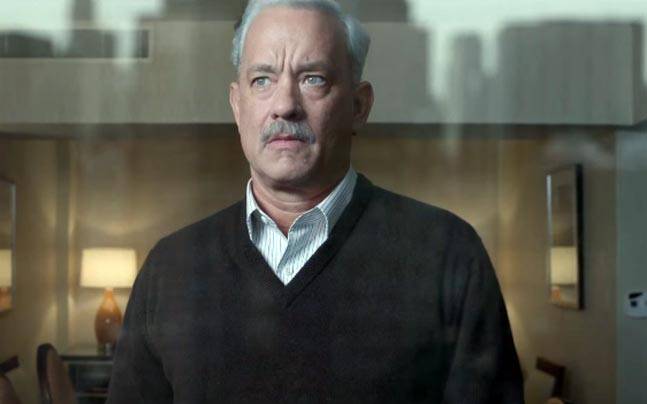
DIRECTOR: Clint Eastwood
MPAA RATING: PG-13
RUNTIME: 96 minutes
A nonstop flight from New York City to Charlotte, North Carolina, will take about two hours. It’s a very common route, flown multiple times every day by multiple airlines. US Airways Flight 1549 was one of just a number of aircraft to make the voyage on January 15, 2009. Yet it’s a flight that has gained specific notability, of course, because of what happened after only a small fraction of those two hours had elapsed.
Three minutes after departing, the Airbus A320 was struck by a flock of birds, rendering the engines unusable. Another three minutes later, the plane had landed on the Hudson River. A full-sized passenger plane was bobbing up and down on frigid water as passengers stood on its precariously wobbly wings and inflated emergency slides. Miraculously, all 150 passengers and all five crew members survived, resulting in public celebrations of the flight’s crew, especially its captain, Chesley “Sully” Sullenberger, who brought it in for that landing.
Clint Eastwood’s Sully examines the aftermath of this event on the man himself, as the film’s title suggests. He’s played by Tom Hanks, who portrays Sully with a kind of devoted professionalism and humble approachability, emphasizing the type of personality required to successfully pull of such a difficult landing.
However, these are traits that leave Sully utterly unprepared for the media firestorm surrounding him and his crew and the scrutiny of the flight by the National Transportation Safety Board, who are doubtful of the pilot’s assertion that his water landing was the only feasible action that could have been taken in this particular scenario.
This maelstrom of attention – from a public deeply infatuated with his quick thinking and skillful maneuvering to industry superiors deeply suspicious of him – grows exhausting for Sully. It’s also quite a test of the will for the flight’s co-pilot, Jeff Skiles (Aaron Eckhart). These two men are the only ones who can personally attest to what happened in the cockpit during the 208-second timespan from the initial bird strike to the ditching in the Hudson. They carried the operation out. The question becomes whether or not they can successfully justify it to the board, as a number of computerized route simulations and preliminary reports begin to shed internal doubt on the perceived necessity of the water landing.

Eastwood is particularly adept at projecting Sully’s growing sense of uncertainty. The more he hears the investigatory panel refute the validity of his arguments, the more he begins to question his own actions. Hanks does excellent work in showing the physical toll this stress takes – flashback scenes of Sully boarding the plane before the flight show him striding with confidence.
This is in stark contrast with a later scene, as he enters an NTSB hearing. He moves deliberately, fidgeting involuntarily, his hands shaking constantly. He replays the flight over and over in his mind and has nightmares of what could have happened, imagining his aircraft dipping into the Manhattan cityscape, losing altitude at a hopeless rate, and exploding on impact as it decimates a handful of multi-story buildings.
There’s also an element of isolation. Despite being surrounded by people nearly 24/7, Sully feels lost. Screenwriter Todd Komarnicki highlights this through physically separating the film’s titular character from his family. Sully’s only communications with his wife Lori (Laura Linney) are through the phone. He must remain in New York City until the NTSB investigation concludes, and she has to look after their two daughters at the family’s home in California. This also serves the purpose of streamlining the film – Sully is just over an hour and a half long, and doesn’t look to distract or divert from its core intention of depicting the flight and its direct aftermath.

Eastwood and Komarnicki’s intention to stick to the point seems to clash with a thoroughly nonlinear presentation. Sully begins with a dream sequence, moves through to an examination of Sully and Skiles navigating the whirlwind around them and then flashes back to a number of depictions of Flight 1549, either in whole or in part. It’s a kind of approach that is presumably done with the intention of creating a more thorough character examination, an attempt for a more select method of revealing information. But the movie’s slim runtime makes this kind of approach difficult. It ends up jumbling the script because there isn’t a lot of auxiliary detail to work from.
Yet this movie works on its most fundamental level, as an engaging reminder – part fact and part fiction – of how little we actually know about a news story. We read articles and watch 5-minute packages on TV, but we’re in the dark about how the people involved are impacted. One constant throughout the film is the depiction of a man who wishes for the frenzy to end. He just wants to get back in the air and do the job he’s loved his entire life. Sully reminds us that those we brand as heroes must bear the ramifications of that title, and all the expectations we bestow upon them. And that’s never an easy task.






